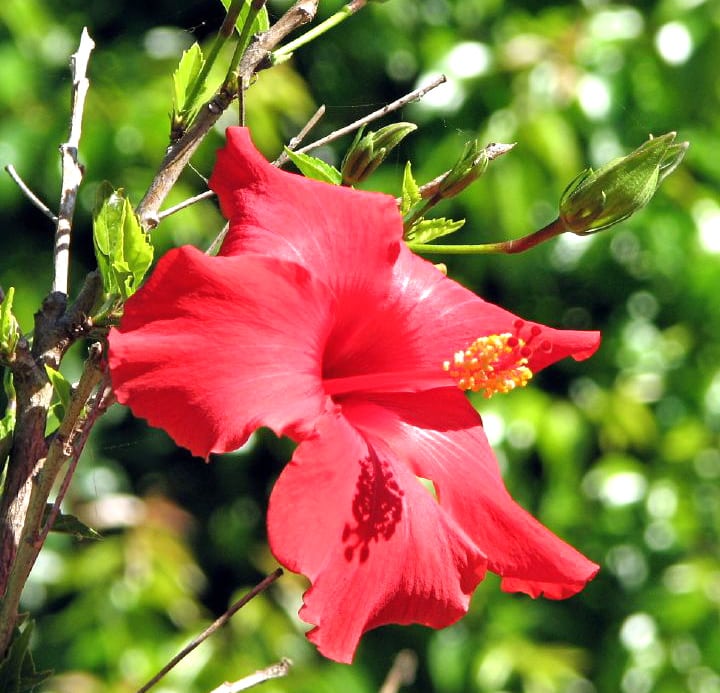My Daily Dozen recommends five daily servings of beverages (one glass or 12 ounces), and two of my favorites are hibiscus tea and my Hibiscus Punch concoction.
What Are The Health Benefits Of Hibiscus Flower?
Antioxidants
In a comparison of the antioxidant content of 280 common beverages, hibiscus tea ranked number-one, even beating out the oft-lauded green tea.
High Blood Pressure
Studies show that a cup of hibiscus tea with each meal lowers blood pressure by 7 points, 129 down to 122. And tested head-to-head against a leading blood-pressure drug, captopril, two cups of strong hibiscus tea every morning, using a total of 5 tea bags for those two cups, was as effective in lowering blood pressure as a starting dose of 25mg of captopril taken twice a day.
What Are The Side Effects Of Hibiscus?
Herbal teas are potentially erosive for our teeth. Particularly fruity and citrusy teas like hibiscus, but it all depends on a variety of factors. To minimize the erosive potential we can use a straw, and after consuming acidic food or drinks, we should rinse our mouth with water to help neutralize the acid.
Would Too Much Hibiscus Tea Be Toxic Due to Iron Content?
I love the USDA Nutrient Database! (accessible here). That’s where the data for videos like The Best Nut, The Best Bean, and The Best Apple came from. I can see how you could get confused, though. I know it says “fluid ounce” but they’re just multiplying their 100 g portion by 2.37. So what they’re referring to is 237 grams of the dried bulk petals (the ash and fiber content can tip you off). So even if you chew and swallow the hibiscus flowers after you drink your tea (or do what I do: blend them in with a high speed blender), it would take about 400 cups to reach that 20 mg, so no need to worry! There are, however, other reasons why we probably shouldn’t drink more than a quart a day, as I discuss below.
Is It Safe To Drink Hibiscus Tea Everyday?
Aluminum in Tea
When it comes to our body’s absorption of aluminum in hibiscus tea, we don’t have the data to be on the safe side. So we should assume the worst—that is hibiscus tea aluminum, unlike green and black tea aluminum, is completely absorbable.
In that case, based on the World Health Organization’s weekly safety limit we may not want to drink more than 15 cups of hibiscus tea a day, but that’s based on someone who’s about 150 pounds.
For a 75 pound 10-year-old, a half gallon a day may theoretically be too much. And more extensive testing more recently suggests levels may reach as high as twice as much, so no more than about two quarts a day for adults, or a quart for kids every day or for pregnant women.
Hibiscus tea should be completely avoided by infants under 6 months as well as kids with kidney failure, who can’t efficiently excrete it.
Manganese
We only need about 2 to 5 milligrams of manganese a day, and 4 cups of hibiscus tea can have as much as 17, averaging about 10. Is that a problem?
If we take too much in, our body decreases the absorption, and increases the excretion. So even though tea drinkers may get 10 times the manganese load, the levels in their blood are essentially identical. So there is little evidence that dietary manganese poses a risk.
That was regular tea, though, we don’t know about the absorption from hibiscus, so to err on the side of caution we should probably not routinely exceed the reference dose of 10 mg per day, so that’s only about a quart a day for adults, a half quart for a 75 pound child.
So given this data I’ve cut back to no more than a quart of filtered a day.
